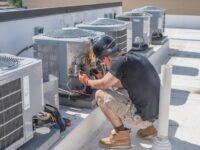How to approach renovating your bathroom

Planning to have a stab at a bathroom refresh? Here’s how to approach renovating your bathroom, from choosing a design that adds value to the tools you’ll need to do the job like a professional.
Know your limits
First things first: know your limits when it comes to bathroom renovation. Even the most adept DIYers might lack the knowledge and ability to deal with complex pipework – and the consequences could be catastrophic if you make mistakes!
Especially if you’re planning a full-scale renovation, consider utilising the services of a professional plumber for any aspects that might require more practised hands.
Set a budget
Secondly, set a budget. It’s crucial to calculate how much you can comfortably spend on the project, and do your research to see what you can do for your money. Getting carried away halfway through the renovation is all too easy, but having a maximum spending limit in mind will help to prevent this.
Remember that many renovations go over the initial estimated cost, so you need to allow for this eventuality when you set your budget.
Decide on a design
Next, it’s time to browse bathroom styles and decide on a design. Keep budget front of mind when you’re doing this, and make sure to do a price comparison check before buying materials or fixtures.
The bathroom can be a make-or-break aspect with buyers, so it’s best to stick to timeless styles and classic décor if you want to protect and potentially increase your home’s value. Neutral or monochrome colour schemes are advisable, perhaps paired with one vibrant shade for added character.
In terms of fittings, remember that flexibility is key: those with space should have both a bathtub and shower to appeal to all tastes and types of buyers. Quality is also vital, so go for high-standard facilities and materials that will resist wear and stand the test of time.
Invest in the tools
Once you know what you want to achieve with your renovation, you are well-placed to invest in the tools for your project. The tasks you need to perform will dictate the exact equipment you need, whether you’re doing a refresh or a complete overhaul.
For those refitting fixtures such as the toilet, pipe sealant is a must to avoid leaks when connecting to the water source. Silicone will also be needed to waterproof the bathtub and shower and potentially line the flooring around the sink.
If the aim is surface-level redecoration rather than intensive renovation, you’ll still need some specialist DIY equipment. This might include paint and paint brushes and a drill, screwdriver and hammer to mount décor to the walls.
Plan the fitting
Lastly, before you start ripping out your existing bathroom you should plan the fitting of the new fixtures and flooring. Doing everything in the right order is vital: this safeguards against error and damage and allows you to backtrack easily should something go wrong.
Start by drawing a plan of your existing bathroom and your intended new bathroom. Next, compare the designs to identify any changes you might need to make to the plumbing to accommodate your new fixtures. Finally, consider the layout of your electrical wiring and how this could influence the details of your decoration.





